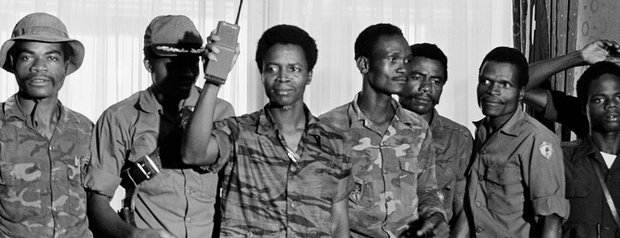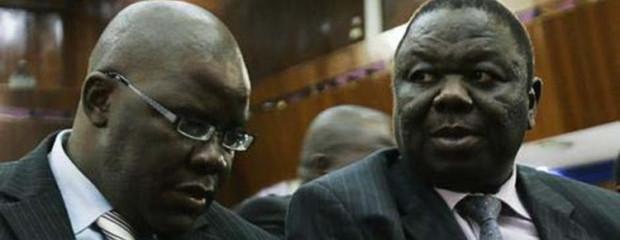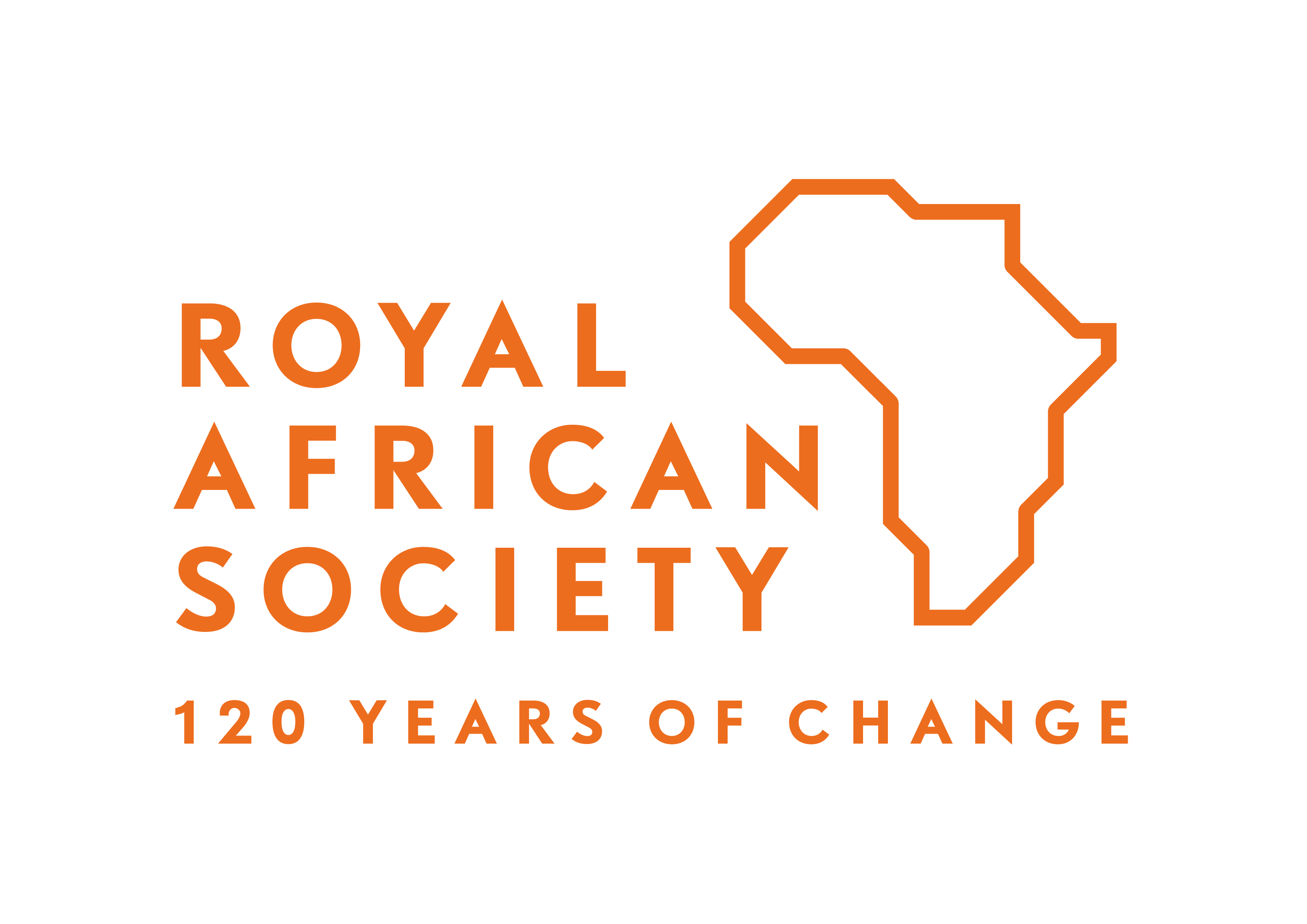Kenya 2013: the art of the grin and shimmy – By Magnus Taylor

I’ve talked to a lot of people since I’ve been in Nairobi. To the taxi driver and policeman; the journalists at the Nation Newspaper who gave me a run-down of battleground seats; the table of Kikuyu businessmen unable to countenance the idea that the UhuRuto would not win (“Raila alienated too many people when he became Prime Minister…and he doesn’t have the money”) and the junior British diplomat, careful with his words, and ready to go on to an emergency shift rotation should British nationals be in danger. But after all the talking, and with 2 days to go until voting, I thought I needed to see something of the actual process of Kenyan electoral politics. I needed to go to a rally.
Andrew Green has already explained on African Arguments what attending CORD’s (the party of Prime Minister Raila Odinga) version of these things is like. The Big Man arrives in a helicopter, covers everyone in dust, growls out a few vague promises and swiftly leaves. So, in the spirit of balance, I thought I should check on the Jubilee Alliance (the party of Uhuru Kenyatta). Having seen him on TV, my sense is that Uhuru is probably a better campaigner than Raila, who I am told has become a little less dynamic in recent years – he is now 68, Uhuru is 51. Kenyatta’s running mate William Ruto is also known as something of a wild man. Although, with the eyes of the national and international press on them, everyone is on their best behaviour – “PEACE” is the word of the day.
The Jubilee Alliance rally is being held in Uhuru Park and it feels like Kenyatta is claiming the centre of the city as his own – just a stone’s throw away from the parliament building. I arrive ridiculously early, at around 11 am. A moderate crowd is already there – mainly young people, some seeking even the smallest patch of shade to sit under, others resigning themselves for a long, hot wait.
It’s 5 hours until the Jubilee Alliance’s Big Four arrive. As well as Uhuru and Ruto, who in the “˜ethnic alliance’ interpretation of Kenyan politics represent the Kikuyu (and assorted Mount Kenya peoples) and the Kalenjin, there’s also Charity Ngilu, who commands the Kamba vote and Najib Balala – a politician from Coast of Omani-Arab ethnicity. Whilst Uhuro and Ruto dominate the Jubilee Alliance ticket, concessions have clearly been made in the campaign to make it feel like a national coalition, rather than just an anti-ICC pairing (the coalition of the “lowest common denominator” which I described in my last post.)
Until the Big Four arrive, the crowd (growing steadily) has been kept reasonably entertained by a DJ and MC who is dressed in the garb of a minor pimp or New York City drug dealer. His beer gut flops over his belt and perspiration soaks his newly acquired TNA t-shirt, which looks to be of a quality somewhat higher than those which are liberally distributed to the crowd. Despite the best efforts of Mr Beer Belly, it is pretty tedious. My companion, a reporter from the Sunday Nation, is monosyllabic – he has a hangover and obviously pulled the short straw coming down here with me. I feel sorry for him having to write about the rally as “˜news’ – apart from the large number of people in attendance, nothing newsworthy seems likely to happen. The international press corps is also assembling, most are photographers, a demonstration that rallies do achieve one thing – they guarantee some good photos.
For several hours the most exciting thing to happen is when a truck arrives to distribute free TNA/URP hats and t-shirts. This precipitates a good natured rush for freebies, with some moderate pushing and shoving involved. I see one man wearing seven hats, one of which he gives to me. It’s pretty crappily made, but the purpose, as with the entire rally, is to create an impression of fanatical support. Whether this actually exists, or has been bought by the entertainment and free clothing on offer, I don’t know. We may get a better idea on Tuesday when the vote is counted. Foolishly bareheaded I am compelled to wear the proffered hat to avoid sunstroke. I imagine a headline in the Nation: “Royal African Society Backs TNA” and keep explaining to amused Kenyans that I am in fact “neutral”.
After hours of chivvying by the MC for the crowd to shout “Uhuru” or “Ruto”, coupled with some local hip-hop and dance acts, a troop of comedians and the rather long-winded exhortations of a female preacher (whom the MC tries, with no success, to interrupt on a couple of occasions) the politicians eventually arrive. Or at least we think they do – the crowd (which must number at least 20,000 by now) sees the famous choppers approaching, flying low over the city skyline. My first thought is why do they need helicopters to get around Nairobi? But suddenly it all makes sense – as they fly over in Apocalypse Now style, the crowd goes wild, it is genuinely a great moment of theatre, and those of us who have been waiting for 5 hours for something to happen are ready to be impressed. As with the t-shirt and hat giveaway, this is about the politics of boredom – leave the people out in the sun all day and they’ll cheer anything that punctuates the monotony.
After another interminable hour – the time it takes Uhuru, Ruto, Ngilu and Balala to travel from their choppers to the stage – they eventually appear, all 4 of them in an open-topped car with Kenyatta and Ruto standing at the back and Ngilu and Balala sitting slightly awkwardly up front. You might, in a moment of carelessness, take them for Prince Philip and the Queen. The UhuRuto pairing as it waves to its supporters reflects the increasingly Americanised style of Kenyan political campaigning.
The four sit together on the stage like judges at some talent contest and each are invited up to the front to talk about PEACE. They sit down again and then a Kenyan pop-star called “˜Size 8′ with an MTV body and moves to go with it swaggers towards them and takes Uhuru by the hand in a poorly disguised moment of prepared spontaneity. All four again approach the audience (for it is now more like a pop concert than political rally) and sway their hips to the music. Uhuru can certainly move, but Balala’s smile of enjoyment seems forced. Ngilu looks like a grandmother with deep disapproval at “˜Size 8’s’ 4 inch heels, tight white jeans and top. But, as with politicians the world over, they fully understand that it’s all about the grip and grin, or in this case, the grin and shimmy.
Some little boys with PEACE shaved in to their hair are brought on and do some 50 Cent like moves to a Swahili song. The candidates make more pronouncements about PEACE and UNITY, but statements on the latter seem hollow for, as Charles Hornsby (a noted historian of Kenya) writes: “power in Kenyan politics is about creating and exploiting division.” First you need to create a show of unity amongst your chosen ethnic coalition. The Uhuru park rally is just one example of how this is done. In its design and orchestration the thing is certainly impressive. But, in the shallowness of its ideals the whole event left me feeling empty and with a certain distaste for the political process. I leave before it ends and slip out of the back of the staged area to a surprisingly tranquil picture of people sitting in the late afternoon sun, some slowly propelling pedaloes around the boating lake. Perhaps, after all, the rally was just an isolated example of a constructed political fervour and many other Kenyans are disinterested, getting on with their lives.
Magnus Taylor is Editor of African Arguments. He is reporting from Kenya over the election period.





